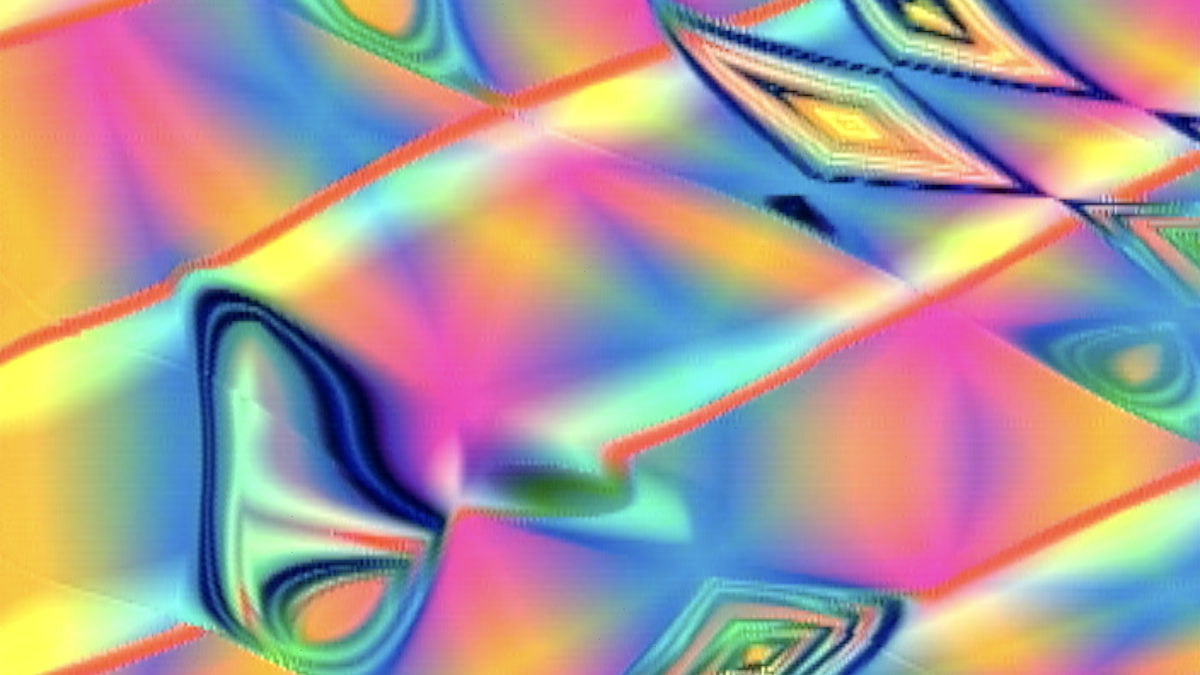My Video Synthesis Secret Weapon

My main video instrument is an LZX Industries-based modular synthesizer. LZX uses the very common Eurorack format, with some slight differences. The main difference is that video synthesis modules have a voltage range of 0V to 1V. Depending on the module, other Eurorack modules can be -5V to 5V or 0V to 5V or -10V to 10V or 0V to 8V. Eurorack is supposedly a standard, but it's a loose, messy one.
There are ways of converting between the different voltage specifications, but to keep things simple, a lot of folks working in modular video will strictly use video synthesis modules. They never have to leave 0V to 1V. But when modular video synthesis came on the scene, it came in drips and drabs. We had to supplement what was available with other gear.
This was great. It lead to lots of experimentation. Necessity is the mother of invention and all that. Every time I looked around my studio I would come up with lists of gear that could be plugged into the video modules. I've used an MPC sampler to record video signals coming out of the modular. It didn't work great because audio rates are a lot lower than video rates, but you can get some nice abstract textures that way. I took advantage of the Roland V-Synth XT's ability to import single-cycle waveforms to create new video oscillator waveshapes.

The King

My best discovery from experimenting with non-video synthesis in a video context–something I still use in nearly every patch, is the Doepfer A-126. This module is an analog frequency shifter with simultaneous up, down, and mixed outputs.
I find that it works best when fed simple signals like ramps. A single vertical ramp can create very useful, stable diagonally scrolling shapes. If you use both of the up and down outputs, you can get a scrolling X pattern. These signals work great as both oscillator shapes and modulators. If you've ever seen a patch that I've done that has a flag-waving motion, that's the frequency shifter being used as a modulator.
If you take the mix output and put it dead center, you will get alternating squashed circles, which have a lovely late-60s/early-70s geometric art feel to them. Take both of the up and down outputs and feed them into a voltage-controlled crossfader and you will get these lovely dancing organic blobs.
For a long time, this module was unobtanium. It was long discontinued and rarely surfaced on the used market. I just happened to have one from my days working with Eurorack audio synthesis. Earlier this year, Doepfer released a very welcome revision to the module with an optional expander panel.
This redesign removes some features and improves others. In its base form, it only has one shifted output, with an up/down mix control (equivalent to the mix output in the original). Luckily, it also has an optional expander that includes not only individual up and down outputs, but outputs for the internal quadrature oscillator, dome filters, envelope follower, and ring modulators. As someone that makes extensive use of modulators with multiple similar-but-different outputs, this is a powerhouse.
The original A-126 had a feature that allowed you to connect it through the back panel to an external quadrature oscllator for more range. This feature has thankfully been brought to the front panel where you can plug in any LFO (quadrature or otherwise). For video use, it's actually much more useful on the lower end of the frequency range, so this is extremely welcome.
I don't yet have my hands on one of the revisions, but it's in the mail. 😄
Another Option
For the most part, guitar pedals do not perform spectacularly with modular video. They are calibrated for a very specific frequency range–and that's not video signals. The types of effects can also be counter-intuitive: fuzz and distortion pedals do not "distort" a video signal; they clip it, giving you a hard key (or a white screen). Similarly, reverb and delay pedals do not "echo" the picture like with video feedback; the filters in those circuits just kind of blur it.

One exception to this is the Electro-Harmonix Ring Thing. This pedal is designed to produce odd ring modulator/bell tones, but it also has a frequency shifter built in. Even better than that, if you hold down the Preset button, it will auto-calibrate its internal (digital) oscillators and lock on to your signal. If you calibrate to video signals, it will lock on to a video rate and give you extremely stable frequency shifted (both up and down) outputs out of the Right and Left jacks.
When performing live, I will often cut down my system to just the necessities. Being able to leave my Doepfer module at home and pack a sturdy-as-shit guitar pedal into my bag is a great option to have. The Ring Thing also has nine preset slots, which is another handy feature for live performance.
I have yet to try other pitch/frequency shifting guitar pedals, but I'd love to sit down with some of them and see what kind of character they have on video signals.
At this point, there is enough of a modular video ecosystem that you never have to leave it, if you so choose. But if I didn't try some of these experiments, I wouldn't have found a set of incredibly useful tools that work their way into nearly every patch I do. Do not be afraid to plug things into other things.